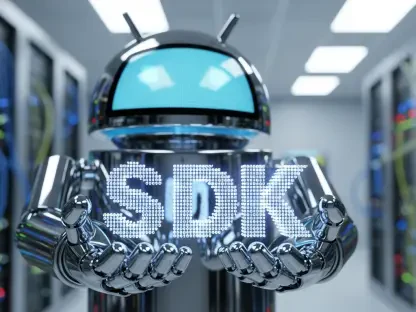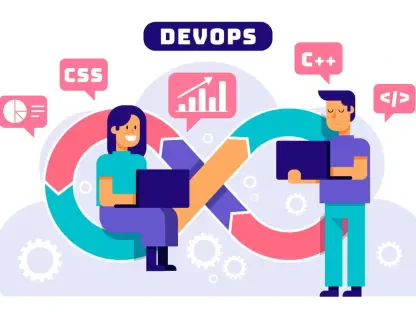Anand Naidu is our resident Development expert. He is proficient in both frontend and backend and provides deep insights into various coding languages. Today, he’ll share his insights on AutonomyAI, a promising startup that has secured $4 million in pre-seed funding to revolutionize front-end development with its Agentic Context Engine (ACE).
Can you explain how AutonomyAI secured $4 million in pre-seed funding?
AutonomyAI’s compelling pitch focused on its unique approach to front-end development, capturing the interest of investors such as Inbound Capital, Gilad Shany, and Vikram Makhiija. Their confidence stemmed from the company’s clear vision, a proficient leadership team, and the innovative potential of their Agentic Context Engine (ACE). These factors collectively motivated investors to back the project with significant funds.
What motivated the creation of AutonomyAI, and why did you decide to focus on front-end development?
The creation of AutonomyAI was driven by the vision to automate repetitive front-end tasks, allowing developers to focus on high-impact activities. The front-end was chosen because it is an area that heavily influences user experience and often involves intricate, time-consuming work that can benefit greatly from AI-driven automation.
What is the Agentic Context Engine (ACE)?
The Agentic Context Engine (ACE) is AutonomyAI’s core technology designed to understand a company’s unique codebase and operational standards deeply. It utilizes this contextual awareness to autonomously execute front-end development tasks, integrating seamlessly into existing workflows.
How does ACE differ from existing AI tools like GitHub Copilot?
While GitHub Copilot assists developers by suggesting code snippets for autocompletion, ACE goes further by executing tasks end-to-end. It handles entire workflows autonomously, rather than just providing helper suggestions, aiming to match the output of seasoned developers in both efficiency and quality.
Can you describe how ACE integrates with a company’s workflow and codebase?
ACE integrates by immersing itself within a company’s existing codebase and workflows, aligning with their sprint cycles and operational standards. It fetches relevant external data, leverages existing components, and ensures the generated code aligns with company-specific needs, providing a seamless incorporation into daily development processes.
How do you envision AutonomyAI changing the front-end development landscape?
AutonomyAI aims to revolutionize front-end development by enabling AI agents to handle repetitive coding tasks autonomously. This change will allow developers to concentrate on more strategic, creative aspects of development, ultimately boosting productivity and driving innovation within teams.
What does the term “pragmatic AI” mean to you in the context of AutonomyAI?
In the context of AutonomyAI, “pragmatic AI” refers to the practical application of AI tools that address real-world challenges. It emphasizes delivering tangible benefits, such as reducing workload burdens on developers, rather than focusing on theoretical capabilities. The goal is to provide reliable, production-ready solutions that integrate seamlessly into existing workflows.
How do your AI agents manage the nuances of front-end tasks such as responsive design and cross-browser compatibility?
Our AI agents are designed to understand and adhere to the nuances of front-end tasks by analyzing a company’s codebase and operational standards. They ensure the produced code meets modern standards for responsive design and cross-browser compatibility, leveraging external datasets and learning from best practices to deliver high-quality outputs.
How does AutonomyAI ensure that the AI-generated code meets the standards of seasoned professionals?
To ensure that AI-generated code meets professional standards, AutonomyAI’s agents are programmed with extensive contextual knowledge and best practices. Continuous learning and improvement cycles allow them to adapt and refine their output to maintain high-quality coding standards comparable to those of experienced developers.
What measures are in place to prevent the generation of buggy or incorrect code?
AutonomyAI employs rigorous testing protocols, including automated testing and validation processes, to catch and correct errors. Post-generation reviews and continuous code quality monitoring ensure that any anomalies are quickly identified and resolved, maintaining the integrity of the development process.
Can you share any real-world examples or case studies that demonstrate AutonomyAI’s capabilities?
While specific case studies from AutonomyAI are not publicly disclosed yet, similar AI models in controlled environments have demonstrated substantial improvements in efficiency and code quality. Real-world data from early adopter companies should be forthcoming, showcasing the tangible benefits of ACE in practical applications.
Who are the key members of the AutonomyAI team, and what are their backgrounds?
Notable members include co-founder Arik Faingold, who founded Pentera and Comm-IT, and CTO Tammuz Dubnov, leading an experienced engineering team, which includes four former CTOs. Their combined expertise in software development and organizational dynamics is pivotal in driving AutonomyAI’s innovation.
How does the experience of your team members contribute to the success of AutonomyAI?
The diverse and extensive backgrounds of our team members, particularly the CTOs with decades of collective experience, significantly enhance our strategic capabilities. Their deep understanding of software engineering and industry challenges ensures that AutonomyAI’s solutions are both innovative and practical.
What roles do the four former CTOs play in the company’s development process?
The former CTOs play critical roles in shaping the technical direction of AutonomyAI, leveraging their extensive knowledge to oversee development, ensure adherence to industry standards, and guide the refinement and enhancement of the ACE technology, positioning the project for successful implementation.
Why do you believe the timing is right for AutonomyAI to launch its products?
With the projected $749 billion market for AI technologies by 2028, and increasing demand for efficient development solutions, the timing for AutonomyAI is ideal. The industry is ripe for innovation, and businesses are actively seeking ways to integrate AI for improved productivity and cost efficiency.
How does AutonomyAI plan to compete with other AI coding startups like Cognition, Poolside, and Cursor?
AutonomyAI plans to distinguish itself with a focus on front-end development, leveraging ACE’s unique capabilities to integrate deeply with company workflows and deliver high-quality, autonomous code. This niche focus, combined with our advanced contextual engine, sets us apart from more generalized AI tools.
What makes front-end development a critical domain for AI innovation?
Front-end development is particularly suited for AI innovation due to its complexity, time-consuming nature, and significant impact on user experience. Automating these tasks can lead to faster development cycles, more consistent quality, and the ability to redirect human talent toward higher-level creative and strategic activities.
Can you elaborate on the involvement of investors like Inbound Capital, Gilad Shany, and Vikram Makhiija?
Investors such as Inbound Capital, Gilad Shany, and Vikram Makhiija have shown strong support, recognizing the transformative potential of AutonomyAI. Their involvement not only provides essential funding but also adds strategic value through their insights and networks, accelerating our growth trajectory.
How do these investors’ perspectives align with the vision of AutonomyAI?
These investors share AutonomyAI’s vision of leveraging AI to enhance efficiency and productivity in front-end development. Their belief in our pragmatic AI approach aligns with our commitment to delivering real-world solutions, not just theoretical advancements, further strengthening our collaborative efforts.
What milestones or goals does AutonomyAI have for the near future?
In the near future, AutonomyAI aims to achieve key milestones such as successful pilot implementations, expanding our client base, continuous refinement of the ACE technology, and securing further funding. Our ultimate goal is to establish a strong market presence and demonstrate tangible benefits to early adopters.
How do you address skepticism about AI’s ability to fully handle front-end development tasks?
We acknowledge the skepticism and understand the concerns. By focusing on continual improvement, rigorous testing, and real-world validation, we aim to build trust in our technology. Moreover, demonstrating successful use cases and transparent communication about our capabilities and limitations will be crucial.
What is your forecast for the role of AI in front-end development?
AI is poised to play an increasingly significant role in front-end development, evolving from an assistive tool to a co-creator and eventually an autonomous executor of tasks. This shift will not replace developers but rather enhance their capabilities, allowing for greater creativity and innovation in the field.









